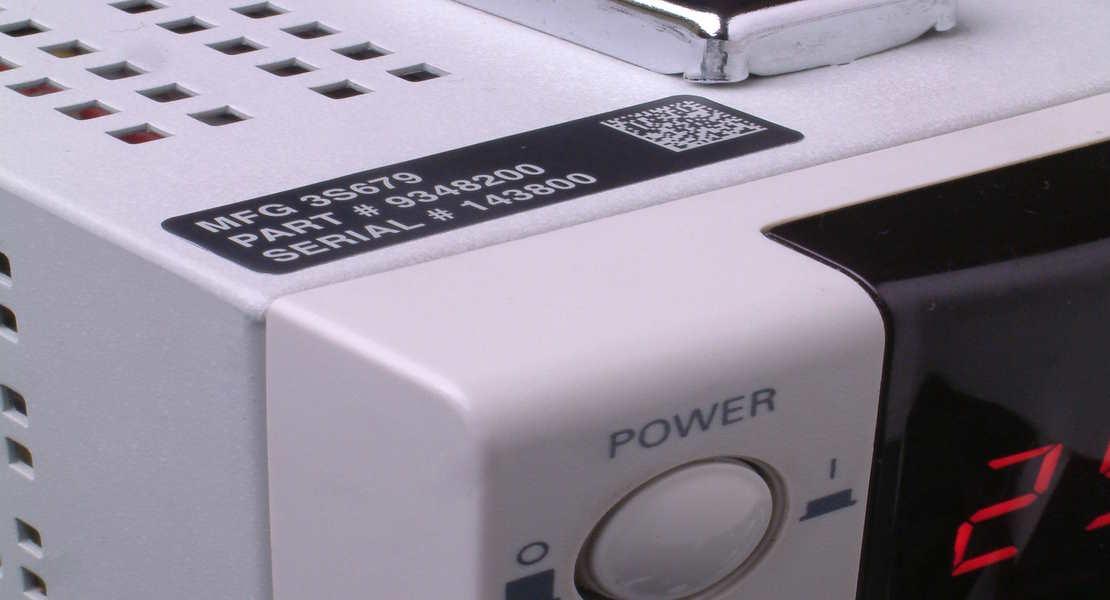What are UID Labels?
UID is a requirement from the Department of Defense. It calls for a globally unique item identifier. This identifier is used to track items from start to finish. It is a permanent marking method used to give equipment a unique ID.
UID labels otherwise known as IUID labels (sometimes referred to as UID tags or IUID tags) play an essential role in the UID process. They contain the information required to comply with the UID mandate in the required format and must last the lifetime of the asset they are assigned to.
Who uses UID Labels?
Every defense contractor that supplies assets to the Department of Defense which meet the program’s requirements are responsible for labeling their products. The Department of Defense uses the UID labels to track the value of an asset, its location, quantity, and its current state.
What are UID Label (UID Tag) requirements?
Requirements for items that need to be marked with an IUID label include:
- Mission critical, controlled or serially controlled assets
- Items valued at $5000 or greater
- Is sold to the US military from a third-party contractor
UID labels must contain specific information about the asset and be able to last the lifetime of the asset.
How does government/military/DOD use UID labels?
The government, military, and Department of Defense use special UID labels for different reasons. These labels are part of the larger IUID system. The IUID system is used to uniquely identify items.
- Asset Tracking and Management: UID labels make it easy to track assets from acquisition to disposal. By uniquely identifying each item, organizations can maintain precise inventory records, monitor the location and status of assets, and ensure accountability for government property.
- Supply Chain Management: IUID labels make it easier to track items in the supply chain by assigning a unique identifier to each unit. This helps improve visibility and control. Each item is given its own identifier. This identifier is at the individual unit level. This facilitates traceability, enhances supply chain visibility, and enables more efficient logistics and procurement processes.
- Maintenance and Lifecycle Management: UID labels support maintenance activities by providing a means to track maintenance history, schedule servicing, and monitor the condition of assets over time. This ensures that equipment remains in optimal operating condition and helps extend its useful life.
- Compliance and Accountability: UID tags assist government agencies and military organizations in complying with regulatory requirements and contractual obligations related to asset identification, tracking, and reporting. They provide a standardized method for uniquely identifying items and capturing relevant data for reporting and audit purposes.
- Counterfeit Prevention and Security: UID labels can help mitigate the risk of counterfeit or unauthorized items entering the supply chain by providing a means to verify the authenticity and origin of products. By uniquely identifying each item, organizations can better ensure the integrity and security of their supply chains.
Overall, UID tags play a critical role in enhancing efficiency, accountability, and security across various aspects of government, military, and DoD operations, ranging from asset management and supply chain logistics to compliance and security measures.
How are UID labels formatted?
The standard format for a UID-compliant label is outlined in MIL-STD-130. It must follow either Construct 1 or Construct 2. Construct 1 includes a part number, barcode, and a serial number. The serial number must be assigned by the supplier and must be unique from any other products made by the company. Construct 2 uses a lot/batch number, part number, and serial number that is taken directly from the asset.
The recommended barcode symbology for UID labels is 2D data matrix. Two-dimensional (2D) barcodes are ideal for a couple of reasons. First, users can encode a lot of data into a smaller area in comparison to one-dimensional (1D) barcodes. Second, 2D barcodes have redundancy within the code so if up to 60% of the barcode gets destroyed, the barcode is still readable. Additional elements can also be added to the UID tag, i.e., 1D barcode, human readable number.
How do you make UID labels compliant with MIL-STD-130?
MIL-STD-130 is a military standard (Identification Marking of US Military Property) that describes markings required on items sold to the Department of Defense including UID markings. MIL-STD-130 describes the materials allowed, maximum text size and fonts, format, syntax and rules for identifying marks on a part, where to locate this marking plus exceptions and unique situations. Metalcraft is very familiar with MIL-STD-130 and will ensure customers’ UID labels are compliant by verifying every order to the specs described in the military standard.
For more information on UID labels or to get started on your UID application contact Metalcraft at 800-437-5283 or [email protected].
 | About the Author: Marianne AlvaradoMarianne Alvarado is our Vice President of Sales. Alvarado joined Metalcraft in March of 2000 as a Territory Specialist, became Sales Manager in January 2022 and was named Vice President of Sales during August of 2023. She leads both the Outside and Inside Sales teams. Marianne lives in Davenport with her husband, Dave Beeman. Mobile Phone: 641-529-9492 Email: [email protected] Office: 3360 9th St. SW, Mason City, IA 50401 Office Phone: 641-423-9460 |




